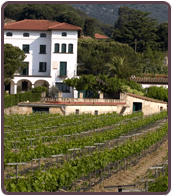Many Americans remain unaware that Spain has a deep-rooted wine-making culture. Spain is the third largest wine producing country in the world and owes a great deal of its heritage to the outbreak of the phylloxera in 19th century France.

Many Americans remain unaware that Spain has a deep-rooted wine-making culture. Spain is the third largest wine producing country in the world and owes a great deal of its heritage to the outbreak of the phylloxera in 19th century France. The outbreak devastated French vineyards and winemakers moved into Spain, and particularly into the Rioja region, where new vines could be planted and grown. This led to the first great wine boom in Spanish history. Wine was exported all over the world to make up for the lost French vineyards. However, Spain was not immune to the phylloxera threat which developed in the early 20th century. During the 1970's, Spain incurred a surge of new capital that aimed at renovating insolvent vineyards and replanting vines. In this way, the
Rioja region grew into Spain's most famous wine growing area creating distinctive and well-aged reds made from the
Tempranillo grape. While today's Spanish wines are aged less than their predecessors, it is still par for the course to age
Rioja style reds for four years or more. Many new winemakers are transforming the industry and art of winemaking in Spain with New World style wines from many regions throughout the country.





